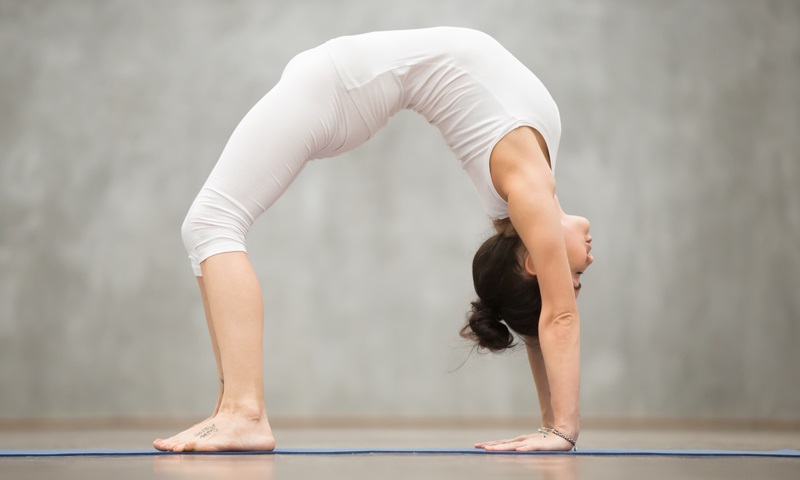In yoga, the wheel yoga pose is known in its other terms, such as:
- Chakrasana
- Urdhva Dhanurasana
It is sometimes called the upward-facing bow pose. The wheel pose is considered an intermediate-to-advanced back-bending posture engaging the entire body.
Wheel pose
The wheel yoga pose is body position, a deep back bend opening the chest and tones the other parts:
- Abdomen
- Thighs
- Arms
Holding the wheel pose targets the entire body, a challenging posture to work up to or modify if you are a beginner. The wheel pose stretches the chest and lungs and gives an energy boost.
What muscles work in a wheel pose?
The wheel pose will strengthen the following muscles:
- Glutes. It is comprised of 3 primary muscles, namely:
- Gluteus maximus
- Gluteus mediums
- Gluteus minimus
These will buttocks the muscles helping stabilize the body when standing, climbing, running, or balancing when twisting the body. They are an essential part of many foundational movements engaged daily.
- Hamstrings. There are 3 hamstring muscles at the back of the thighs that start at the hips and insert at the knees. These three muscles are the following:
- Biceps femoris
- Semimembranosus
- Semitendinosus
Use your hamstring muscles to work many leg movements, including:
- Walking
- climbing stairs
- squats
- Lower back muscles. There are three types of back muscles helping the spine function including:
- extensor muscles
- flexor muscles
- oblique muscles
These muscles help support the spine and maintain proper posture. It allows you to make different positions of the lower back, such as:
- Flex
- bend forward
- Lift
- arch
Wheel pose stretches different muscles, such as:
- Hip flexors
- Wrists
- Abdominal muscles
- Hip flexors. The hip flexors are muscles involved in flexing different hip movements, such as bringing the knee closer to the chest. You can use the hip flexor muscles when taking a step. There are 5 muscles involved in the hip flexion, including:
- Iliacus
- Psoas
- Pectineus
- Rectus femoris
- Sartorius
Stretch the hip flexors to make them longer and prevent injury.
- Abdominal muscles. The abdominal muscles are the muscles surrounding and supporting the internal organs. It connects the upper and lower body. These muscles help keep the body stable and balanced and support the spine.
- Wrists. The intrinsic muscles of the wrist and hand stabilize the position during the wheel pose. The wrist is engaged in the dorsiflexion, which is bent backward.
Benefits of wheel pose
The wheel pose is stretching the chest and lungs while strengthening the following:
- wrists
- arms
- abdomen
- buttocks
- spine
- legs
Studies may also have found the wheel pose has the following benefits:
- Boost the strength. A study was performed on the wheel pose and has been found with the other yoga poses to increase muscular strength.
- Enhance flexibility of the spine. A study conducted with women over 50 years old found incorporating the back-bending pose, such as wheel pose into the yoga routines significantly boosted the spinal flexibility.
- Help people with diabetes boost blood glucose levels. People who have diabetes participated in yoga routines, including back-bends. The wheel pose achieves better blood sugar control than those who didn’t.



